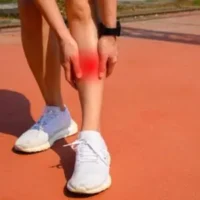Scars are a natural part of the healing process that occur after injury or surgery. When the skin is damaged, the body produces collagen to repair the wound. This can result in the formation of a scar, which is a new type of tissue that replaces the original skin and helps to protect the underlying structures from further injury. This new tissue is often less “elastic” or mobile than the original skin that was damaged.
The extent and appearance of scarring depend on several factors, including:
- Type of injury or surgery: Different types of injuries or surgeries can result in different types of scars, including hypertrophic scars (thick, raised scars) and keloid scars (large, raised scars that extend beyond the borders of the original wound).
- Location of injury or surgery: Scars can be more noticeable in areas where the skin is thinner, such as the face or neck.
- Age: Younger skin is typically more flexible and better able to recover from injury without scarring, while older skin is more prone to scarring.
- Genetics: Some individuals are more prone to scarring due to their genetics.
- Skin type: People with darker skin are more prone to developing keloid scars, while people with lighter skin are more prone to developing hypertrophic scars.
- Environmental factors: Exposure to the sun, pollution, and other environmental factors can contribute to the formation of scars and affect the healing process.
- Health status: Health factors, such as malnutrition, infection, and hormonal imbalances, can affect the body’s ability to heal and increase the risk of scarring.
Whilst scarring is a natural part of the healing process, there are treatments and interventions that can help to reduce the appearance and symptoms of scars, including medications, topical treatments, surgical or cosmetic procedures, and massage/manual therapy.
Effective treatments for post-operative scarring, include:
- Silicone gels or sheets
- Pressure therapy
- Massage and manual therapy, such as osteopathy
- Microdermabrasion
- Chemical peels
- Laser therapy
- Surgical revision
Osteopathic manual therapy can assist with scarring in several ways:
- Improved circulation: Scars can impair circulation, leading to discomfort and decreased function. Osteopathic manual therapy can improve circulation to the affected area, promoting healing and reducing symptoms.
- Alleviation of pain and discomfort: Scars can cause pain, discomfort, and tightness, especially if they are located near joints or other sensitive areas. There are many reasons for this, including nerve damage and/or regeneration. Osteopathic manual therapy can help alleviate these symptoms by reducing tension and improving the mobility of these tissues, through the use of specific techniques.
- Improved range of motion: Scar tissue can limit mobility, leading to a reduced range of motion and decreased function in other areas of the body.
- Reduced stress and tension: Scars can be a source of emotional stress and tension, especially if they are prominent or associated with a traumatic event. Direct “hands-on” treatment by a trained Osteopath can assist with the long-term healing process for the individual.
Examples of scar tissue that our Osteopath commonly assist with include:
- Spinal surgical scars: discectomy, spinal fusion
- Shoulder and knee reconstructions
- Breast scars: lumpectomy, mastectomy, and augmentations
- Caesarean scars
- Skin cancers removals such as Melanoma or BCC
Osteopathy can be an effective way to manage scar tissue, from providing relief from pain and discomfort to improving functional restrictions, and assisting with overall health and well-being.
Come and see our Osteopaths trained in scar tissue management, Dr. Chrissy Weston and Dr. Teille Wickstein, today. It doesn’t matter if your scar is new or old, we can assist with both. Treatment of scars can start as early as 3-6 weeks (once your surgeon gives us the all-clear), which can help minimise scar tissue formation and maximise function.








